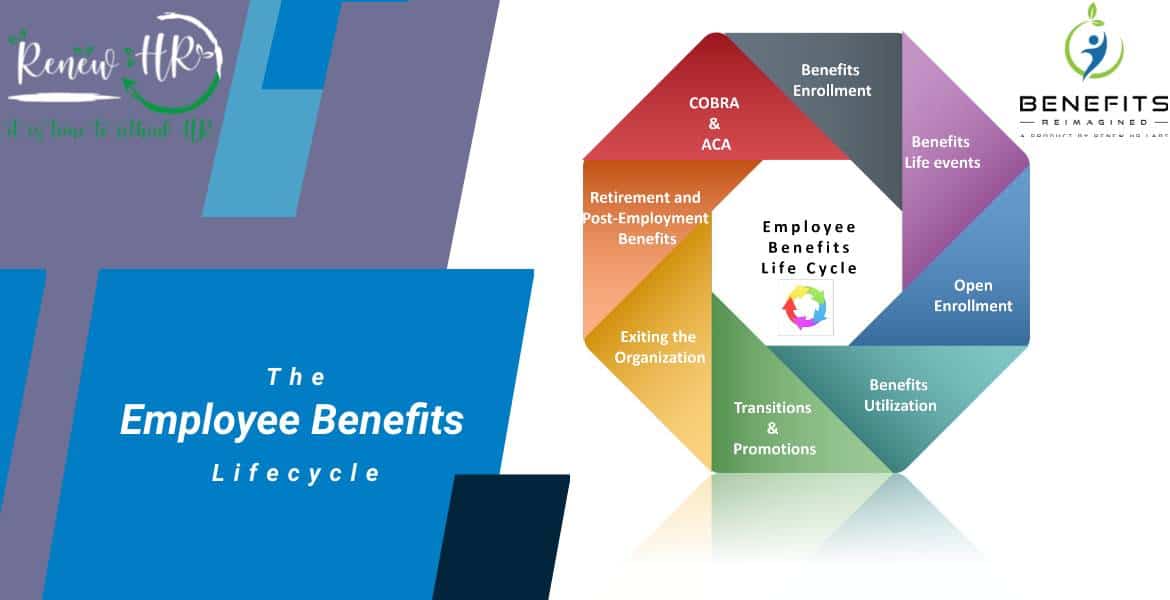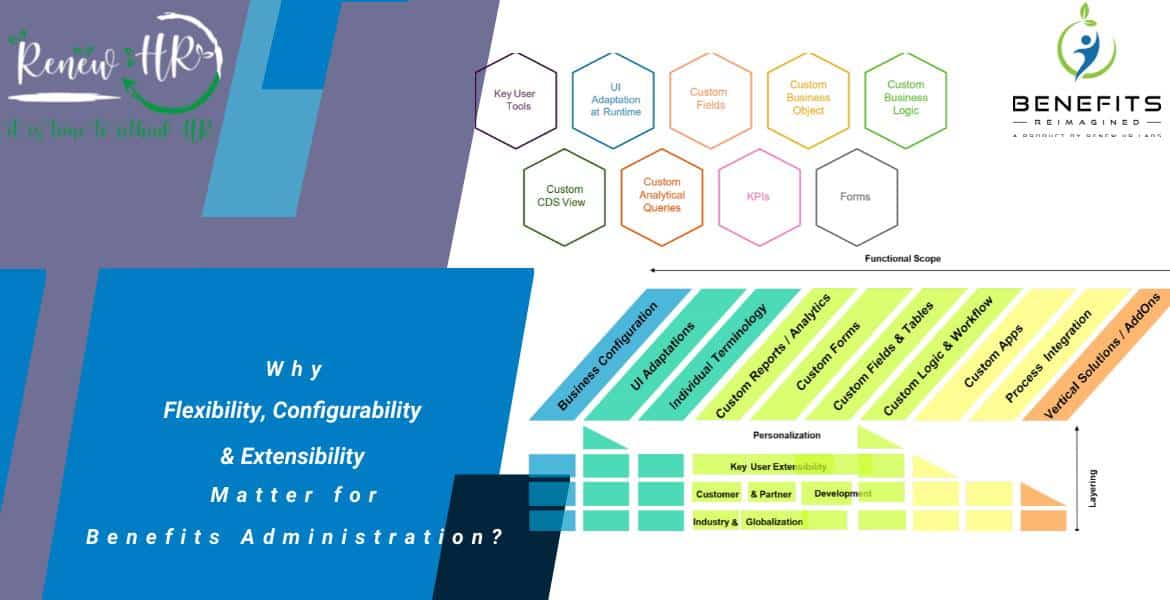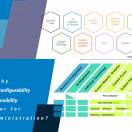Give one example of how to close the talent gap at your organization.
To help you best close the talent gap in your organization, we asked HR Managers and business leaders this question for their best strategies. From fostering open conversation between employees and leadership to creating a comprehensive mentorship program, there are several measures to take to effectively bring the talent gap in your organization to the barest minimum.
Here are seven ways to close the talent gap at your organization:
-
- Foster Open Conversation Between Employees and Leadership
- Develop Cross-Training Opportunities
- Build a Solid Learning and Development Strategy
- Create a Coaching and Growth Model Within Your Organization
- Reimburse Employees for Training and Certifications
- Maximize Your Current Talent Pool
- Create a Comprehensive Mentorship Program
Contents
Foster Open Conversation Between Employees and Leadership
Internal mobility, career pathways management, retention – however your company describes it, chances are it feels challenging to keep track of all of that when the priority of a business is revenue generation, meeting deliverables, focusing on strategy, and making sales.
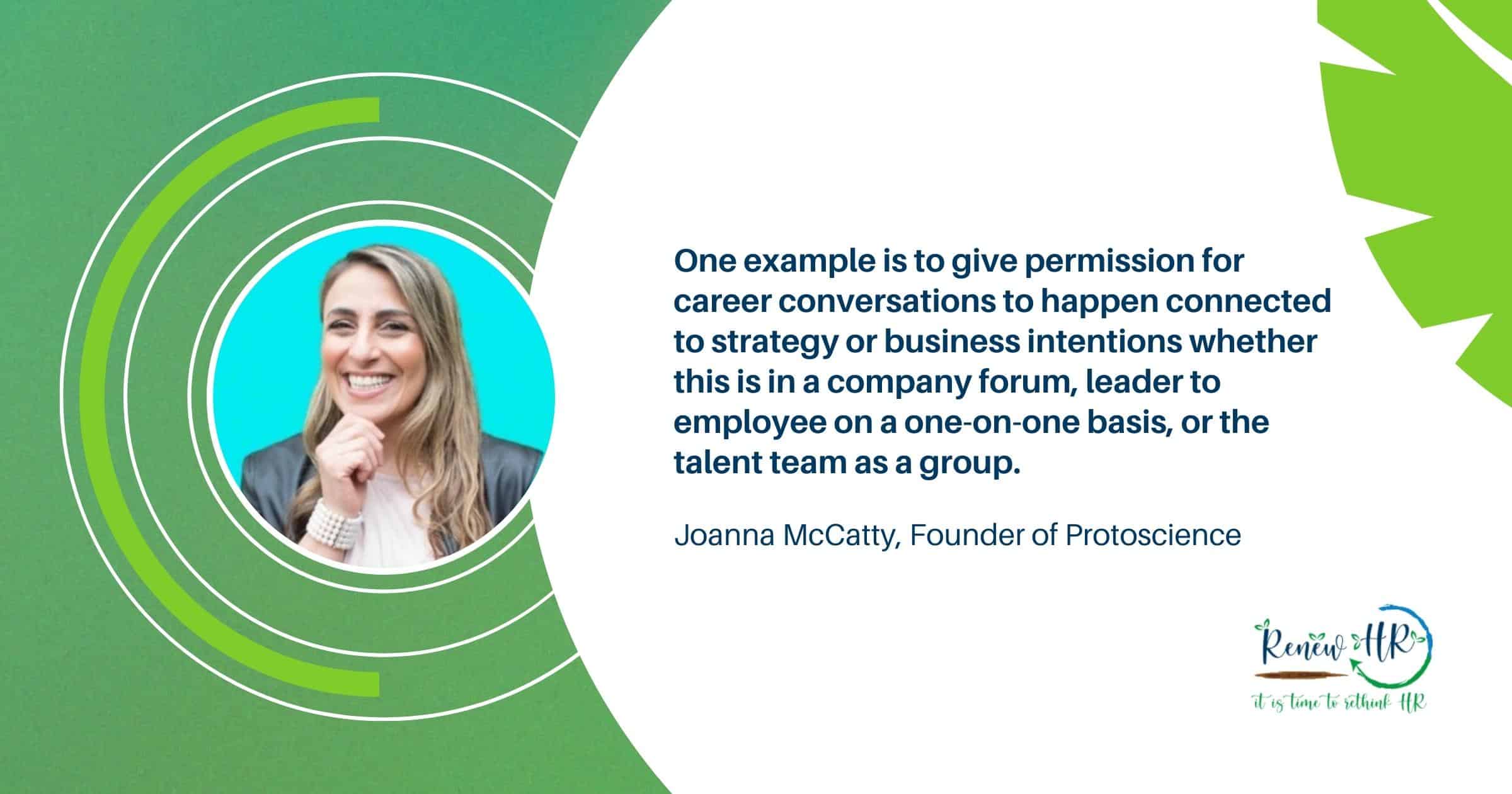
So how can you close the gap between the needs of the business, the needs to hire in order to help the company grow, and the needs of each employee to grow, expand, step up and shape their career to ensure their happiness currently and in the future?
One example is to give permission for career conversations to happen connected to strategy or business intentions whether this is in a company forum, leader to employee on a one-on-one basis, or the talent team as a group. This will help coach people and set them up properly for success.
Joanna McCatty, Protoscience
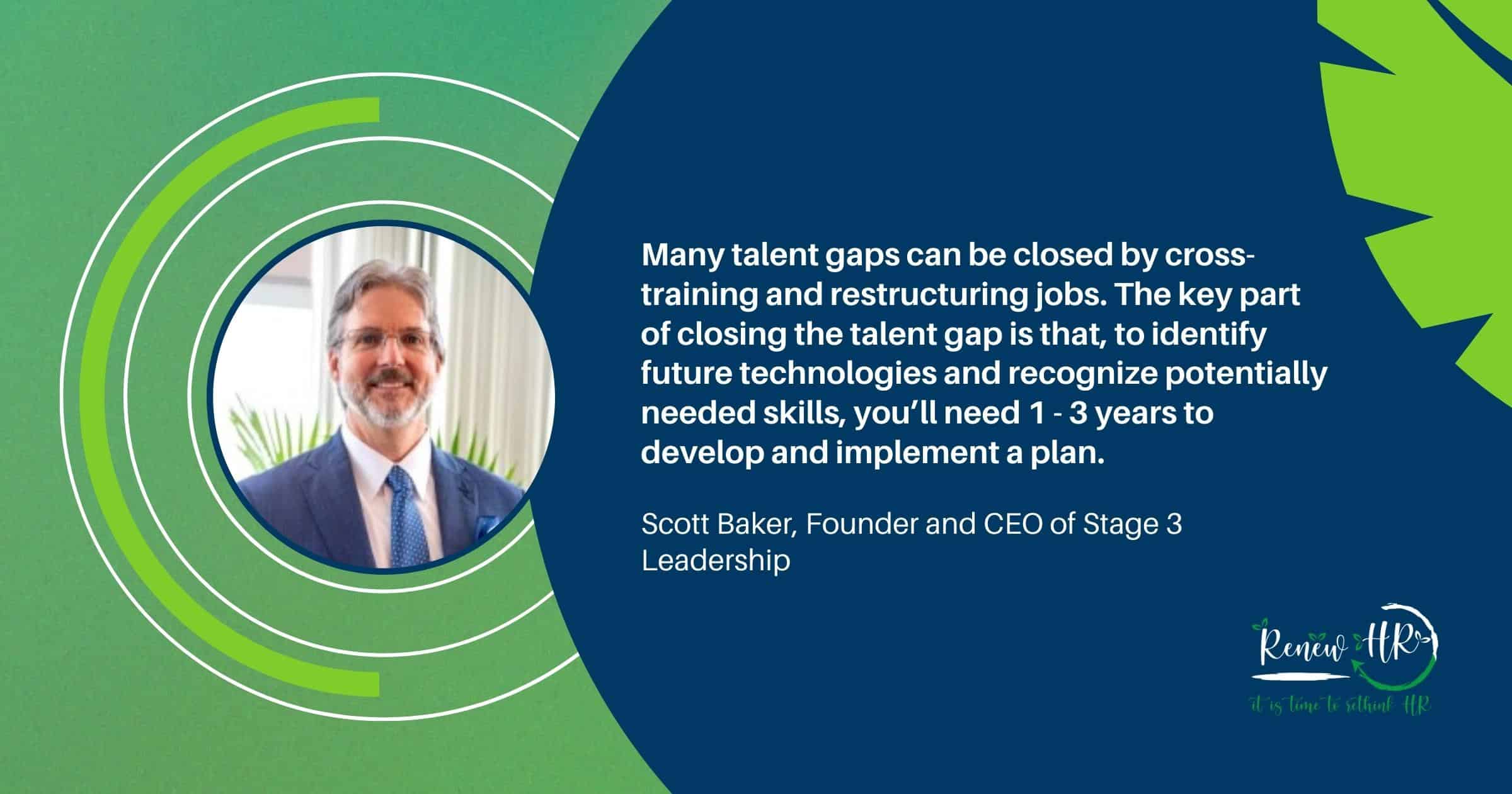
Develop Cross-Training Opportunities
Many talent gaps can be closed by cross-training and restructuring jobs. The key part of closing the talent gap is that, to identify future technologies and recognize potentially needed skills, you’ll need 1 – 3 years to develop and implement a plan.
Too often, organizations are reactive and rush into the labor market to hire candidates with the “new” experiences and skills that were anticipated 1-3 years ago.
The other advantage of providing cross-training is that you will have higher retention as you demonstrate the organization’s commitment to training and developing employees. Of course, remember to adjust the employee’s compensation to reflect the added experience and skills or you may lose some of your employees to competitors who are aggressively recruiting similar skills.
Scott Baker, Stage 3 Leadership
Build a Solid Learning and Development Strategy
From my extensive experience recruiting talent for organizations, the overall hiring process often costs a substantial amount of dollars and time. Therefore, instead of immediately deciding to hire someone with a specific skill that your team lacks, consider investing in training your current workers to fill that talent gap.

With industries evolving globally, a high-quality Learning & Development program is a must-have for big companies, while small businesses can take up smaller-scale initiatives like funding online short courses for employees to train in skills relevant to their job scope.
Such upskilling and reskilling will not only benefit your organization, but it will also keep your workers engaged and help with retention in the long term. Professionals today hate being stuck in the same place; when they feel like they’re expanding their knowledge and credibility at your firm, they’re more likely to stick around.
Anjela Mangrum, Mangrum Career Solutions

Create a Coaching and Growth Model Within Your Organization
One example of how to close the talent gap at your organization is to create a coaching/growth model within your organization. Giving your organization’s most valuable resource access to coaching and opportunities of growth from within will keep employees engaged, empower them to take ownership of their own performance, and quickly allow them to close the talent gap from within.
Melissa Mohr, Mohr Coaching and Development
Reimburse Employees for Training and Certifications
The reality is, right now there simply aren’t enough candidates with the in-demand tech skills companies need to hire for. Upskilling or reskilling your current employees is one way to overcome your talent gap, but not every business has the resources to conduct this kind of training in-house. A reimbursement program for employees can be a great alternative.
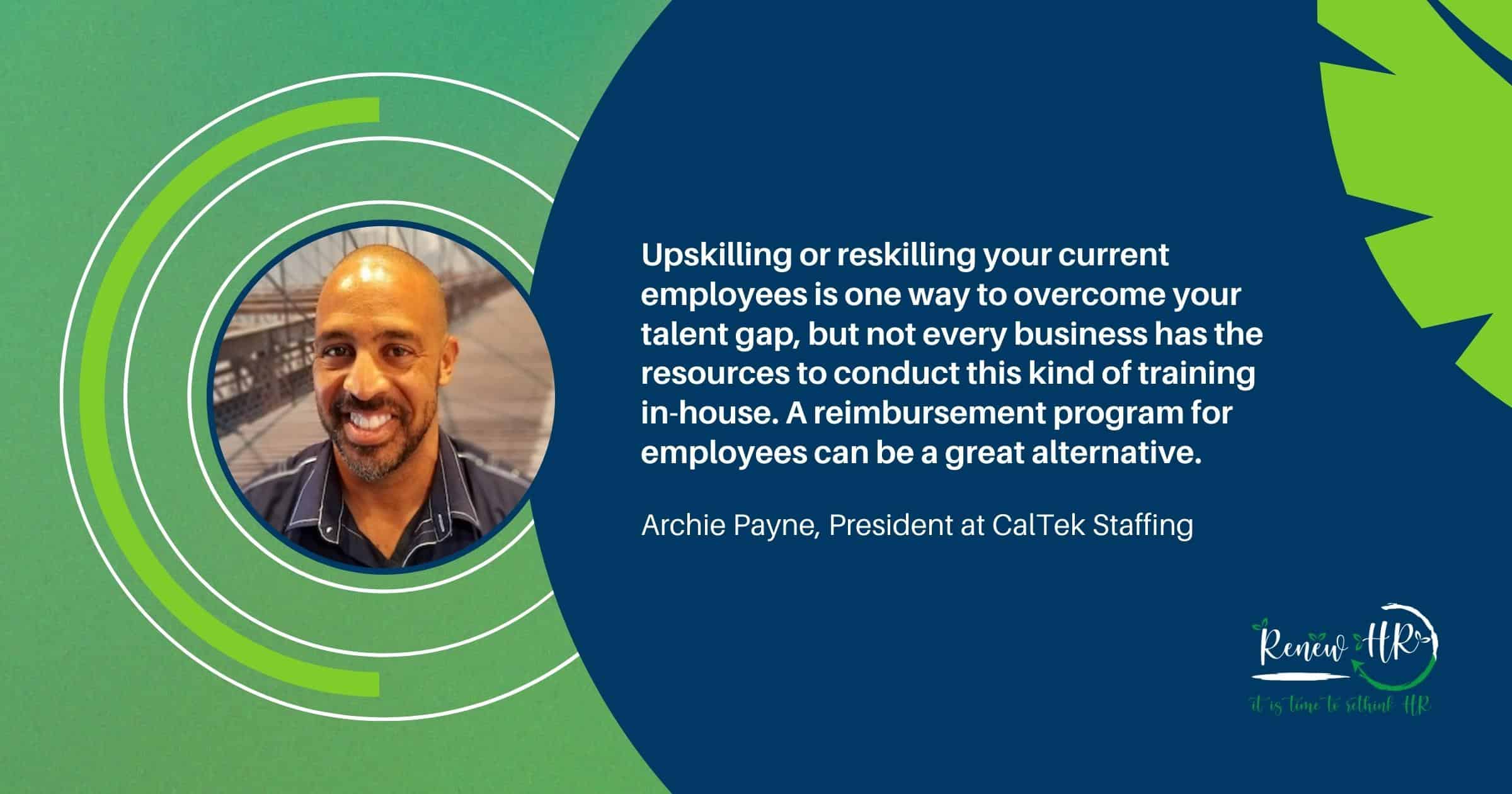
Determine which specific skills or certifications you need to add, then tell your team they’ll be reimbursed if they get independent training or certification from a selected list of organizations or institutions that you trust as experts in these areas. This lets you add the needed skills to your team without the hassle or expense of an in-house training program, but also without putting the burden of paying for this training solely on your employees.
Archie Payne, Caltek Staffing
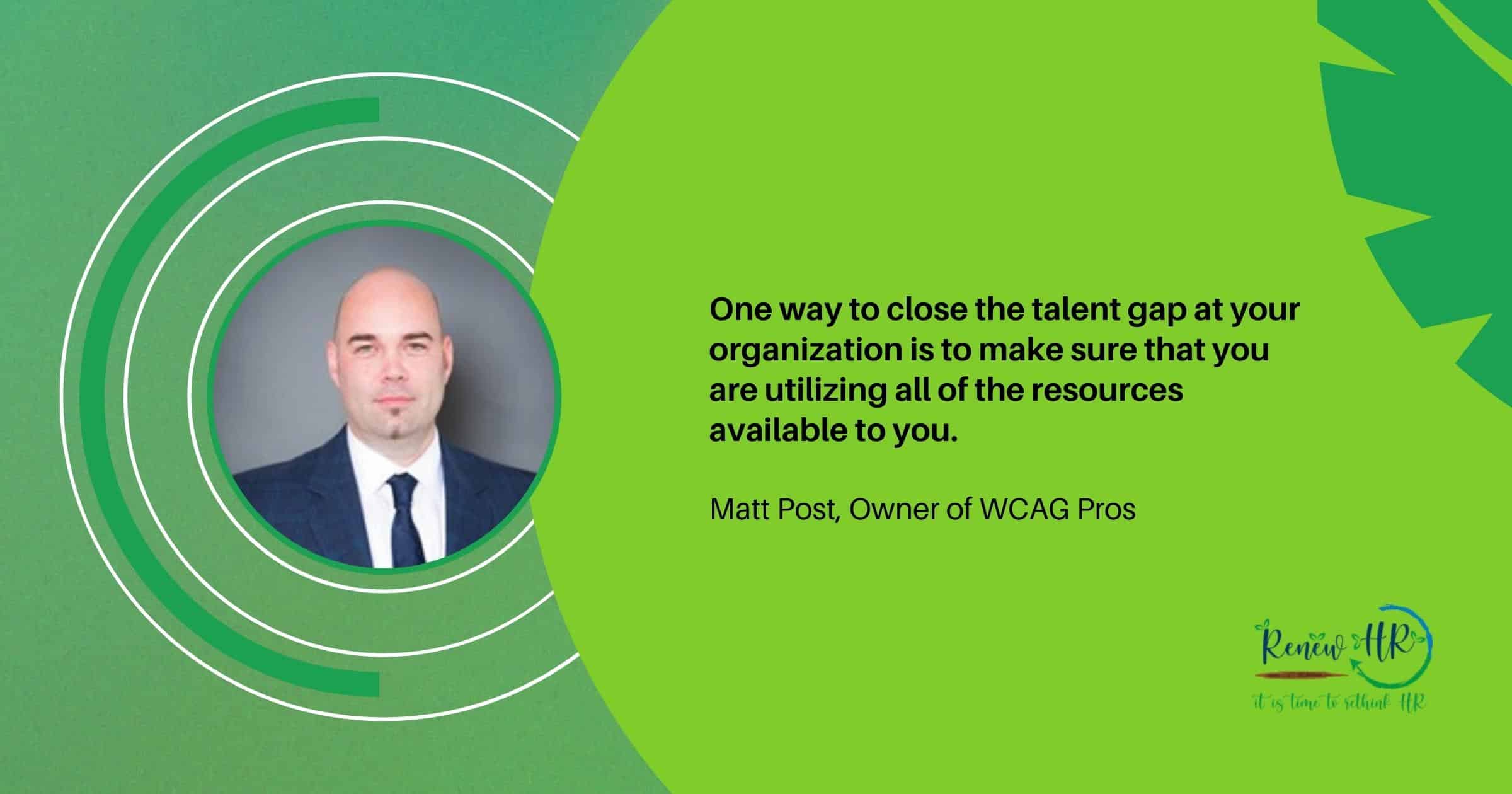
Maximize Your Current Talent Pool
One way to close the talent gap at your organization is to make sure that you are utilizing all of the resources available to you. For example, if you have a large number of employees who are needed for certain tasks, such as a sales team or an accounting department, then it is important that those people are able to work together and share information.
Another way to close the talent gap is through education. By providing employees with training and education on new processes or technologies, you can help them learn how they can better perform their job duties. This will help them feel more engaged in their jobs and will also enable them to contribute more effectively within your organization.
Matt Post, WCAG Pros
Create a Comprehensive Mentorship Program
Create a robust mentoring program for your employees or overhaul the one your organization already has. Having a sense of structure is crucial for new hires to feel comfortable in any new environment.
With a sound mentorship program, your business becomes the direct beneficiary of more well-trained talent while also fostering a better sense of community. Retooling and retraining for new skills can be an expensive and time-consuming process, but direct mentorship allows for individualized education with more flexibility than a one size fits all retooling program ever could.
Patrick Robinson, Paskho
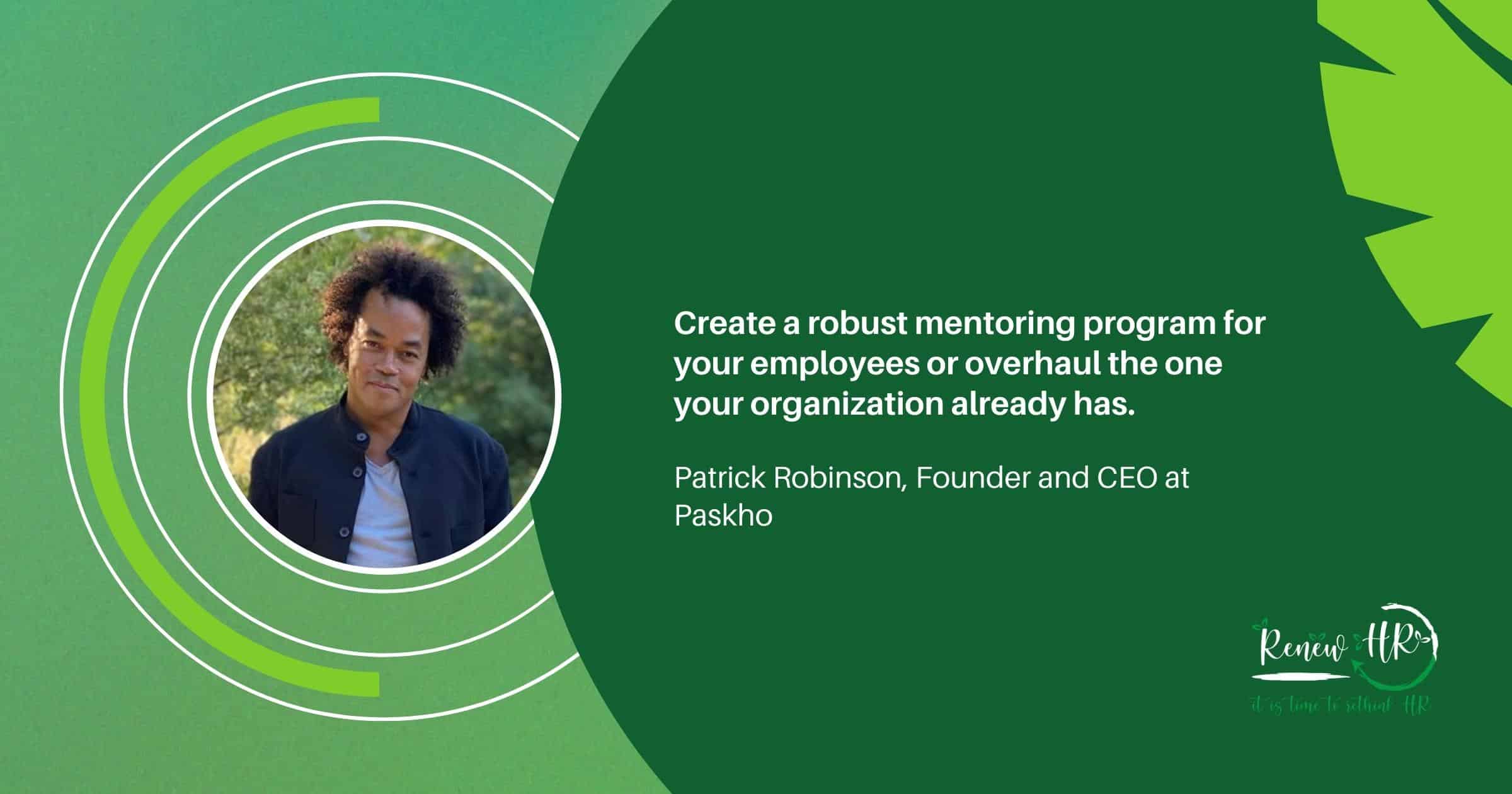
- 7 of The Best HR Cost-Saving Initiatives - 27/10/2022
- 8 Ways Outsourcing HR Boosts Company Growth - 01/10/2022
- 6 Steps to Ensure Your New SaaS HR System Excels - 28/09/2022



